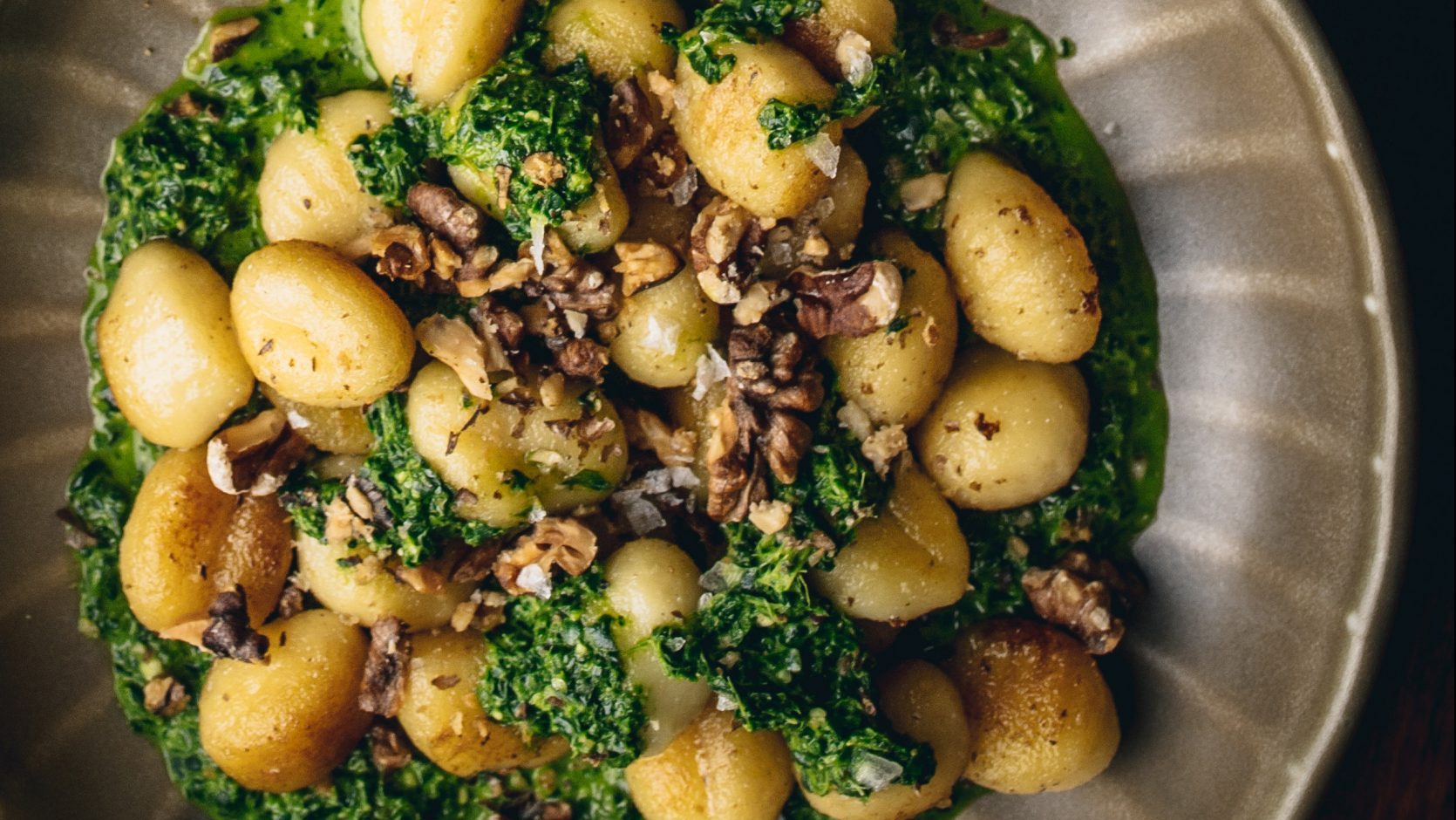Cavolo nero is still having its moment. Go into many a decent restaurant and there it will be; blanched and then fried in butter, seasoned heavily, and used to support a piece of grilled pork, or a slab of delicate fish. Hake, I would hope.
The Italian winter green’s popularity is probably an evolution of the movement that made kale ubiquitous half a decade or so ago. Soon, I think, we will be living in the time of cime di rapa – the leafy tops from turnips – which is now being flung about in trendy restaurants but hasn’t quite eased into the mainstream.
These days, cavolo nero might be found in a buttery bowl alongside a roast in a pub which isn’t really a pub. It will straddle a plate of braised beans – cannellini, haricot, but borlotti most likely – which have been cooked in
chicken stock and garlic and a pinch or two of cayenne. These will be used as a foundation to a piece of flame-licked delicata squash.
The orange, white and green look so appealing together and the dish is fairly
cheap, although, in a newly monied part of Hackney, the plate will be £22 or more.
I rather like cavolo nero but it isn’t easy to cook well. The leaves might be tender but underdo them and they are rubbery and unforgiving. Overcook
them, as many chefs in the just-about-decent kitchens of Britain do, and they
become a wilted mess, slathered in the fat they were doused in and ungenerous in flavour.
Cavolo nero might also be a little boring these days, given its ubiquity. One way of using it well is in a gnocchi dish. This is because the Italian dumplings are filling, stodgy, and require the subtlety of winter leaves. Introduce cheese and nuts, the umami to the richness of the dumplings and
the elegance of the greens, and here we have Italian simplicity at its most
nurturing and robust.
This dish, from the Maltese chef Giovann Attard, now in charge of the menu at the Sicilian-inspired restaurant Norma in London’s Fitzrovia, makes use of cavolo nero beautifully. It is an ideal midweek meal, playing up to the season
diligently but without fuss.
CAVOLO NERO PESTO WITH VEGAN GNOCCHI
SERVES 2
FOR THE PESTO:
45g cavolo nero, washed and chopped
100g walnuts
5 tbsp olive oil
1 bunch basil leaves
2 cloves garlic
50g pine nuts
10g vegan Parmesan (optional)
½ tsp salt
½ tsp black pepper ground
3 tbsp hot water, ideally from your boiling pasta or potatoes
Extra toasted walnuts for serving
FOR THE GNOCCHI:
550g boiled potatoes, mashed dry
5g salt
20g olive oil
300g 00 flour
METHOD:
Wash the kale and remove the middle vein. Cut the rest into pieces and blanch in boiling water for 30 seconds, then remove and place in a bowl of
cold water. Once cold, drain and dry off any excess water.
Place the kale and all of the other pesto ingredients in a food processor and blend until you have a smooth pesto. If the blender is struggling, add a bit more hot water.
Check the seasoning and adjust if needed. Set aside to be used later.
FOR THE GNOCCHI:
In a bowl, mix the mashed potato, salt, olive oil and flour until you form a ball.
It is important to not have a wet and sticky dough so that it’s easy to work with and form the gnocchi. Add more flour if the dough is a bit sticky or a bit
more oil if you have incorporated all the flour.
Keeping most of the dough covered so it doesn’t dry out, take a piece at a time and form it into a long roll around 2cm thick. With a knife, cut the roll into 2.5cm pieces.
Place a fork face down on the bench you are working on. Take the dough piece and place it at the top of the back side of the tines of the fork.
Now, with your thumb on the piece of dough, slide the gnocchi down the
tines of the fork until you reach the working bench. And there you go, you
have a piece of gnocchi ready!
Do the rest of the dough the same way, adding more flour if needed
When all the dough is finished, place the gnocchi on a floured tray. To cook, bring a large pan of salted water to the boil.
Add the gnocchi to the pan and let it cook until they float to the top – this means that they are ready.
In the meantime, put your cavolo nero pesto into a frying pan and warm it up slightly.
Once the gnocchi are cooked, add them to the pesto with a bit of gnocchi
water.
Season and serve with toasted walnuts.




